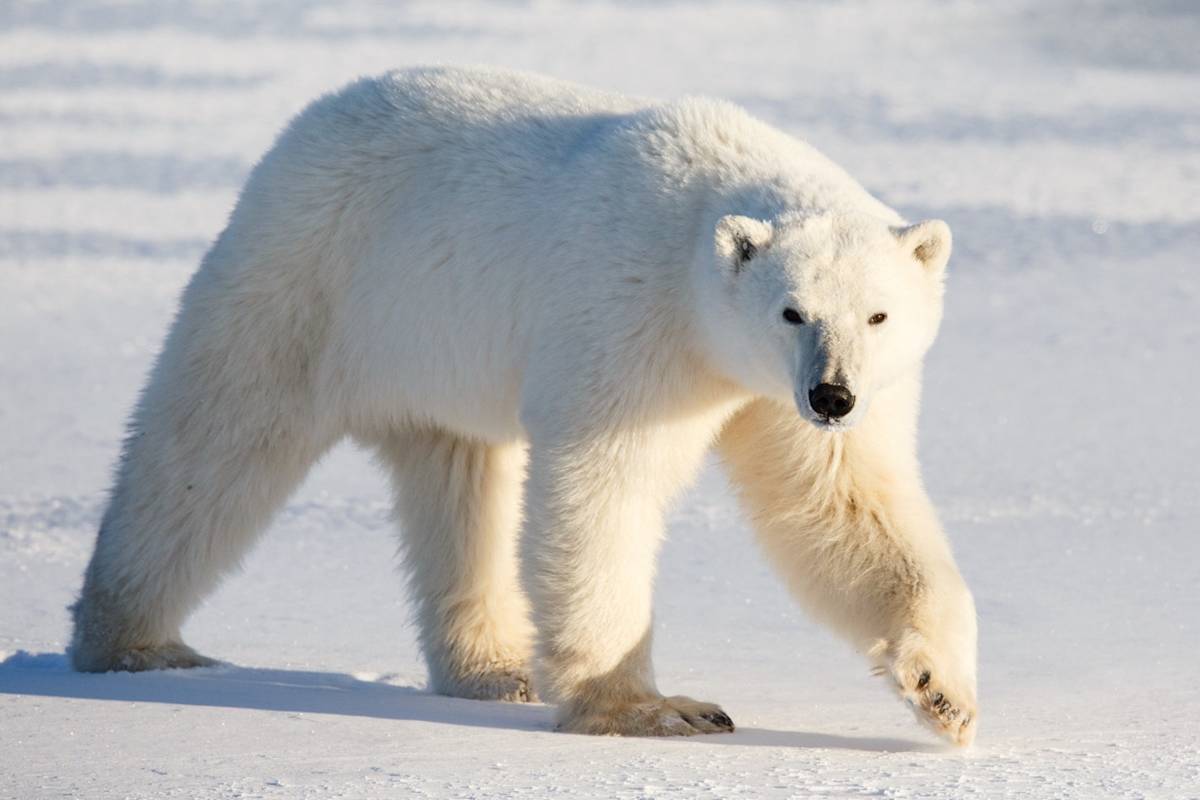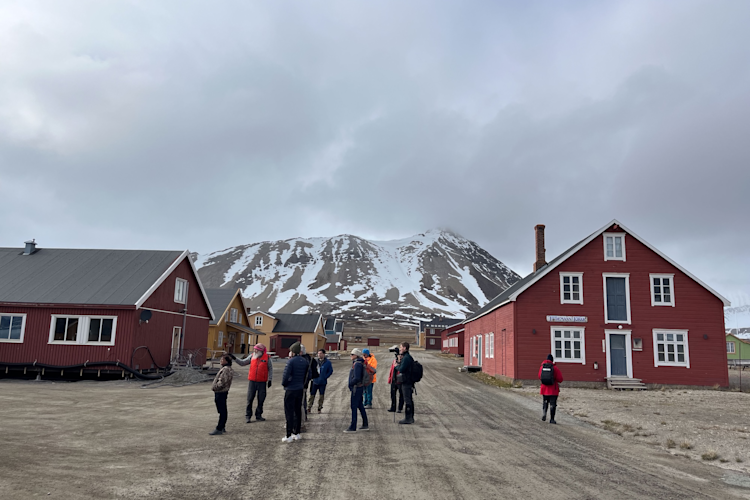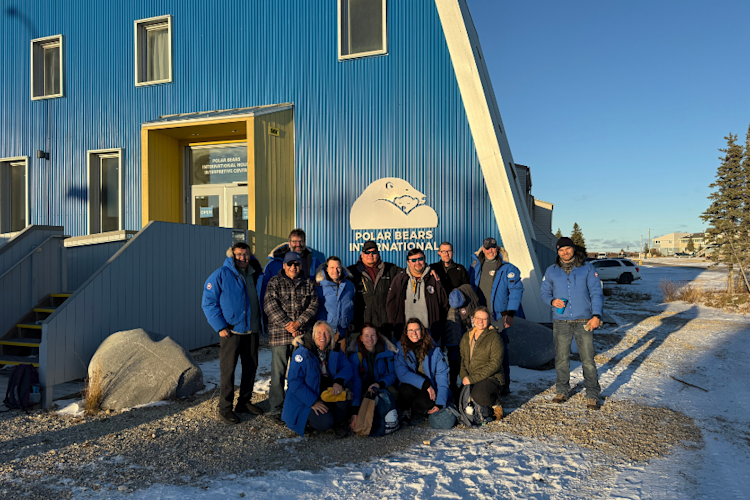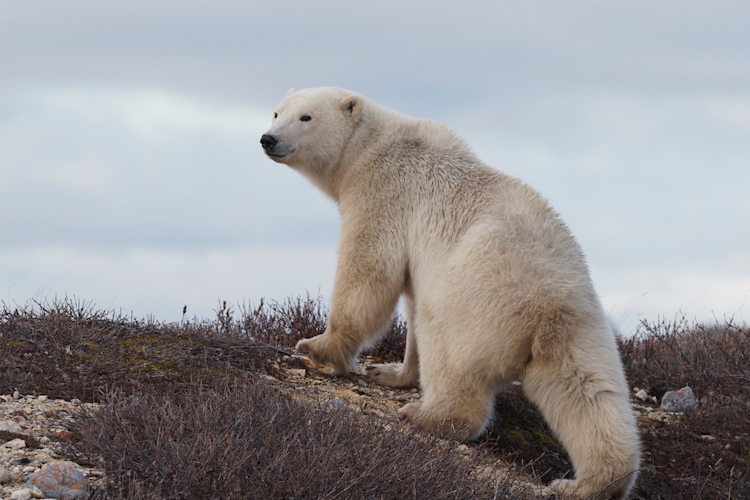For the first time ever, wildlife managers and people who live and work near polar bears have access to a comprehensive new report on polar bear attacks. While not exhaustive, the study tallies published incidents since 1870, categorizes what may have caused each attack, and offers safety measures to help minimize such encounters in the future.
While only 73 known attacks occurred during the time frame studied, the analysis shows that polar bears in poor condition were the most likely to be involved. As sea ice loss continues in the Arctic and more under-nourished polar bears are driven ashore in more places, the authors recommend proactive measures to safeguard both bears and people.
In this Q&A with Geoff York, Polar Bears International’s senior director of conservation and one of the co-authors of the paper, we talk about the study and its implications.
Q: The paper was recently published in the Wildlife Society Bulletin. Can you give us a quick overview?
A: This report gives us the clearest picture yet of polar bear attacks on people, their likely causes, and ways to avoid them. It was compiled by experts from all the polar bear “range states”: Canada, Greenland, Norway, Russia and the United States- who make up the Conflict Working Group of the Range States. The team went all the way back to 1870 compiling accounts accounts of published attacks and fatalities. The result is a significant step forward in understanding why polar bears attack humans, knowledge that will help us make sure we keep both people and polar bears safe.
Q: So, what are the key findings?
A: Between 1870-2014, there were 73 confirmed polar bear attacks in which 20 people were killed and 63 injured. There was no trend in the number of attacks by decade from 1960–2014. However, between 2010 and 2014, when the extent of sea ice reached record lows, the greatest number of attacks took place. Moreover, since 2000, 88 percent of attacks have occurred between July and December, when sea ice is at its lowest. Continued improvements in data collection and sharing will improve our ability to monitor, detect trends and hot spots, and increase delivery of solutions. One caveat is that the short period showing an increase in attacks—2010 through 2014—has a small sample size and a short time frame, so it’s too early to tell if it represents a trend.
Additional points of interest:
Only single polar bears were involved in fatal attacks on people.
88 percent of fatal attacks were predatory and 93 percent were committed by males.
In contrast to grizzly bears, only one polar bear attack could be attributed to a polar bear’s defense of a carcass.
Unlike grizzly and black bears, most predatory attacks by polar bears have been committed by independent immature bears (subadults, 2-year-olds, and yearlings).
The fact that even independent yearling polar bears have killed people is a striking difference from other North American bear species.
Contrary to popular opinion, polar bears have been no more likely to actively hunt and kill people than black bears.
88 percent of attacks involved 1 or 2 people yet it is rare for black or brown bears to attack a group of more than 2 people. In rare cases, polar bears were willing to attack groups of 10 or more people.
Q: Is there a correlation between the report’s results and sea ice loss?
A: While not the thrust of our analysis, climate threads are almost inescapable with polar bear management issues. In this case, the timing of the attacks is revealing: between 1870 and 2014, 68% of attacks occurred between July and December, when the sea ice usually covers the smallest area. But since 2000, those same months have accounted for 88 percent of attacks.
Q: Why, exactly? Are bears getting more aggressive?
A: We find absolutely no evidence for polar bears becoming more aggressive. The threat appears to be twofold: a higher chance of bears being in lower body condition and increased proximity between humans and bears, both linked to changes in sea ice habitat. Less ice brings more bears and more people closer than they have been and for longer periods, so both are having to learn, very quickly, how to live in each other’s backyard as lethal options are no longer the first choice in most parts of the Arctic.
Evidence from bear populations in Hudson Bay, the Beaufort Sea, and the Chukchi Sea, shows individuals spending longer times onshore and in greater numbers. Bears are now having to make a choice as the ice retreats farther and farther from land: do they stay on the ice and retreat with it into deep Arctic waters or do they jump, come to shore and take their chances on land?
Q: Are there other factors putting pressure on the polar bears?
A: Yes, and they are related. The report also references other studies suggesting decreasing body condition for bears in some regions and in some years, and we show that nutritionally stressed adult male polar bears are the most likely to pose threats to human safety. 61% of bears that attacked humans were estimated to be in below-average body condition.
The final “perfect storm” component is that, as the Arctic becomes less icy, more people, with less bear experience, are venturing into it – more tourists, more industries, more shipping. So, we have all the ingredients for increased polar bear-human contact and conflict.
Remote communities often don’t have access to the most modern and effective non-lethal deterrents and in some countries, some tools specifically bear spray, are not yet legal.
Q: Does that mean more risk of people reverting to lethal methods like firearms?
A: Worryingly, yes. In Norway, for example, bear-spray, which is non-lethal, is currently illegal. So rather than offering cans of spray to visitors along with other less lethal tools, they check out rifles. While conflict kills remain low on Svalbard, access to more tools may bring that number closer to zero. Bear spray is also not accessible in Greenland or Russia, and can be difficult to obtain in some Northern Canadian communities as it must be shipped by sea. Similar challenges exist for less-lethal bear bangers, or cracker shells that can be used in a standard 12-gauge shotgun.
Now it is important to note—there are situations in which lethal removal is the best or only option, the authors suggest that more widely available access to deterrents will minimize those situations.
Q: I thought these countries were highly progressive in conservation?
A: Norway has some of the best measures anywhere in the world regarding disturbance and educating people on human-polar bear encounters, but in the bear-spray debate they currently lag behind.
Q: So, what can and should we do to get ahead of this issue, if it’s not too late?
A: It’s definitely not too late, but we need to act fast. As well as the ongoing longer-term campaign to stabilize Arctic sea loss, we need to try to ensure that northern communities and northern industries and workers have access to both training and to non-lethal deterrent options. We also need enhanced data recording and recording of all types of human-polar bear encounters, not just attacks. The Range States Conflict Working Group was set up and tasked to do exactly that: develop a shared data system for long-term monitoring and ongoing analysis.
It’s all about learning to adapt to a future in closer and more frequent contact with polar bears, especially those having a rough year and in poor body condition. The bears are having to adapt too.
Q: Any examples of best practices?
A: Yes. You can find more details in the Solution Case Studies section but to give you a quick overview, some communities have taken the lead on conflict mitigation through grass roots initiatives. This effort is also bringing together traditional indigenous hunters, northern residents, and conservation managers.
Rather than relying on the most obvious reaction of killing bears, people are implementing more sustainable solutions, like setting up polar bear patrols, diverting bears away from communities…things like that. They are looking at ways to keep their communities safe while also maintaining healthy polar bear populations.

















